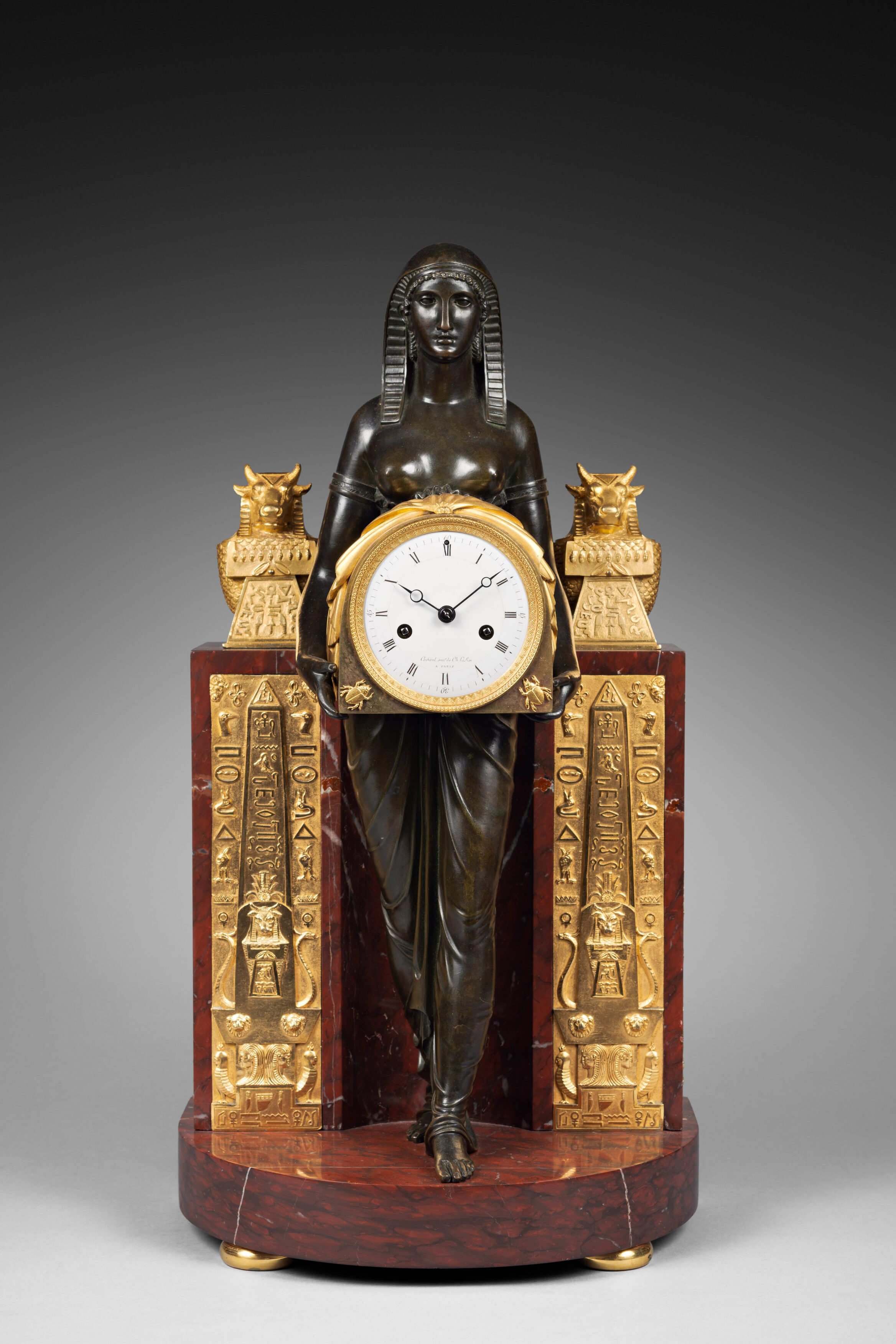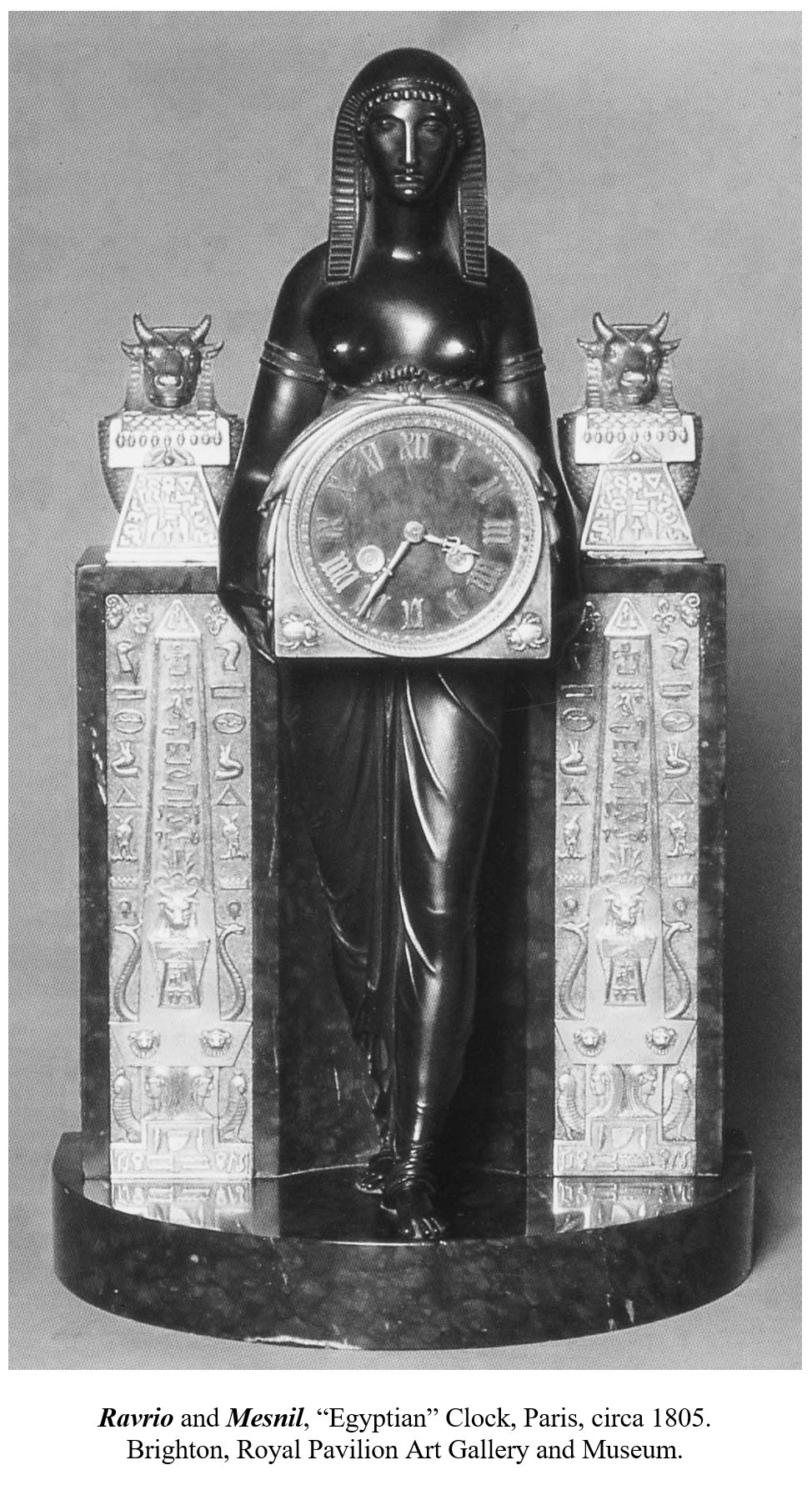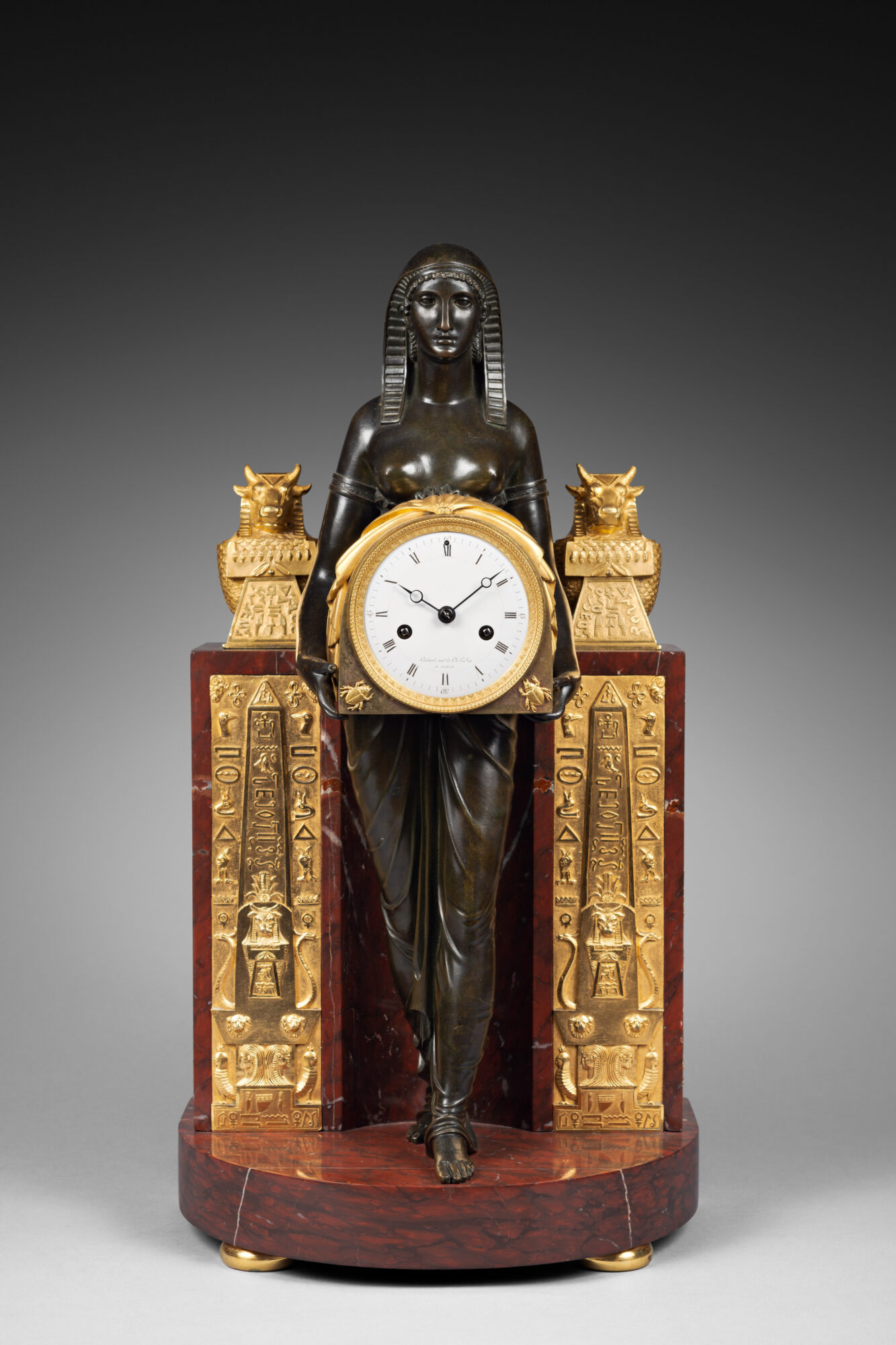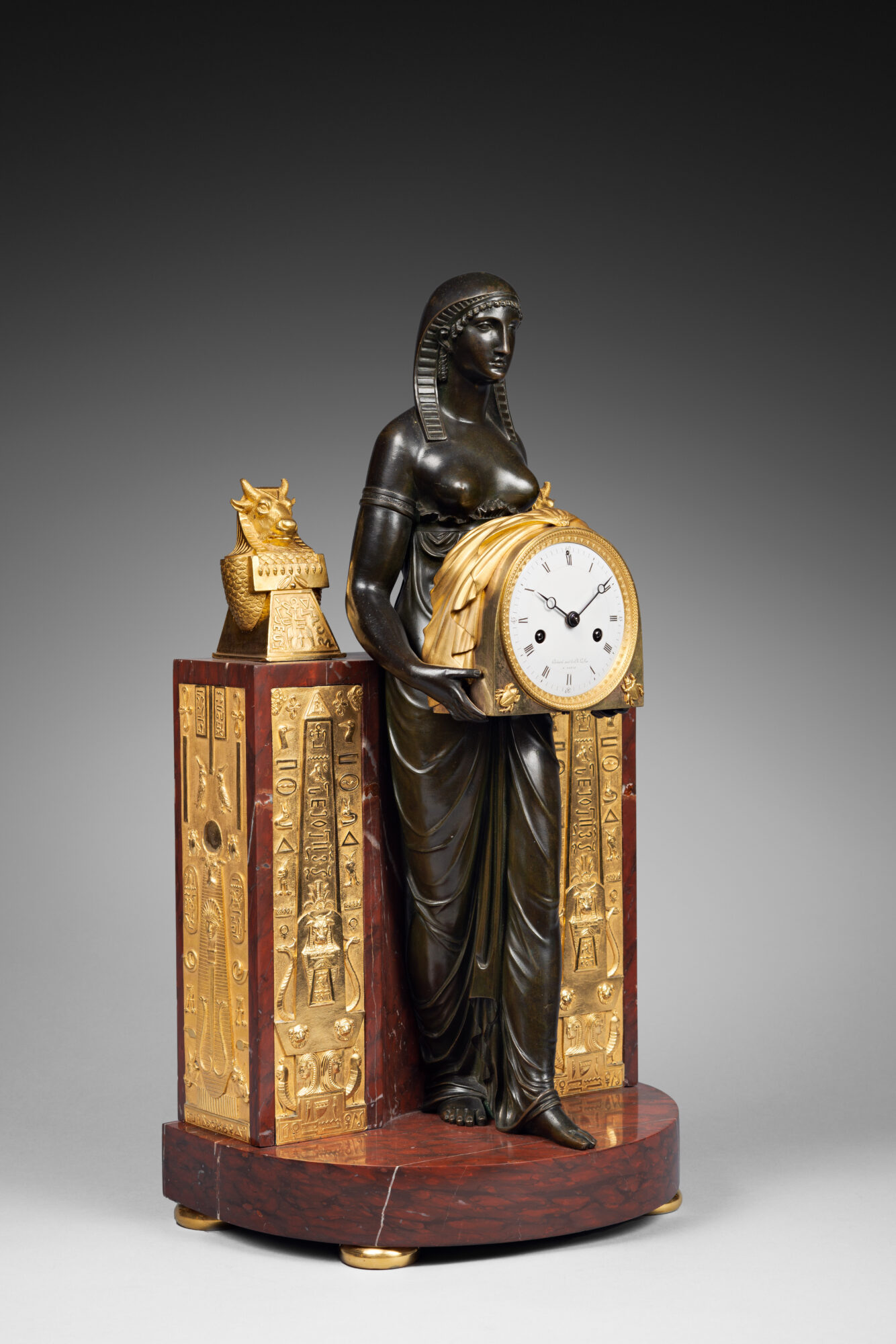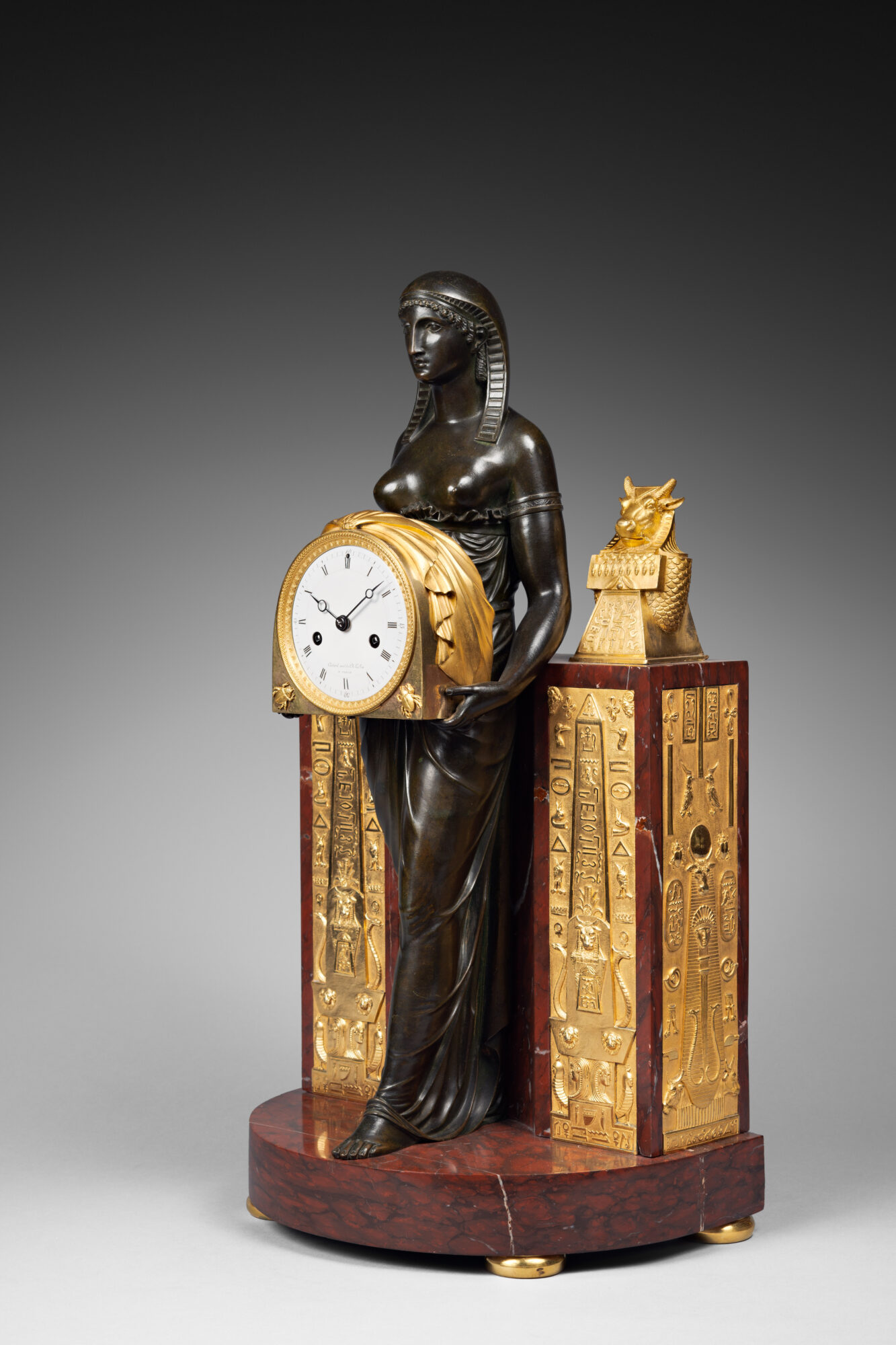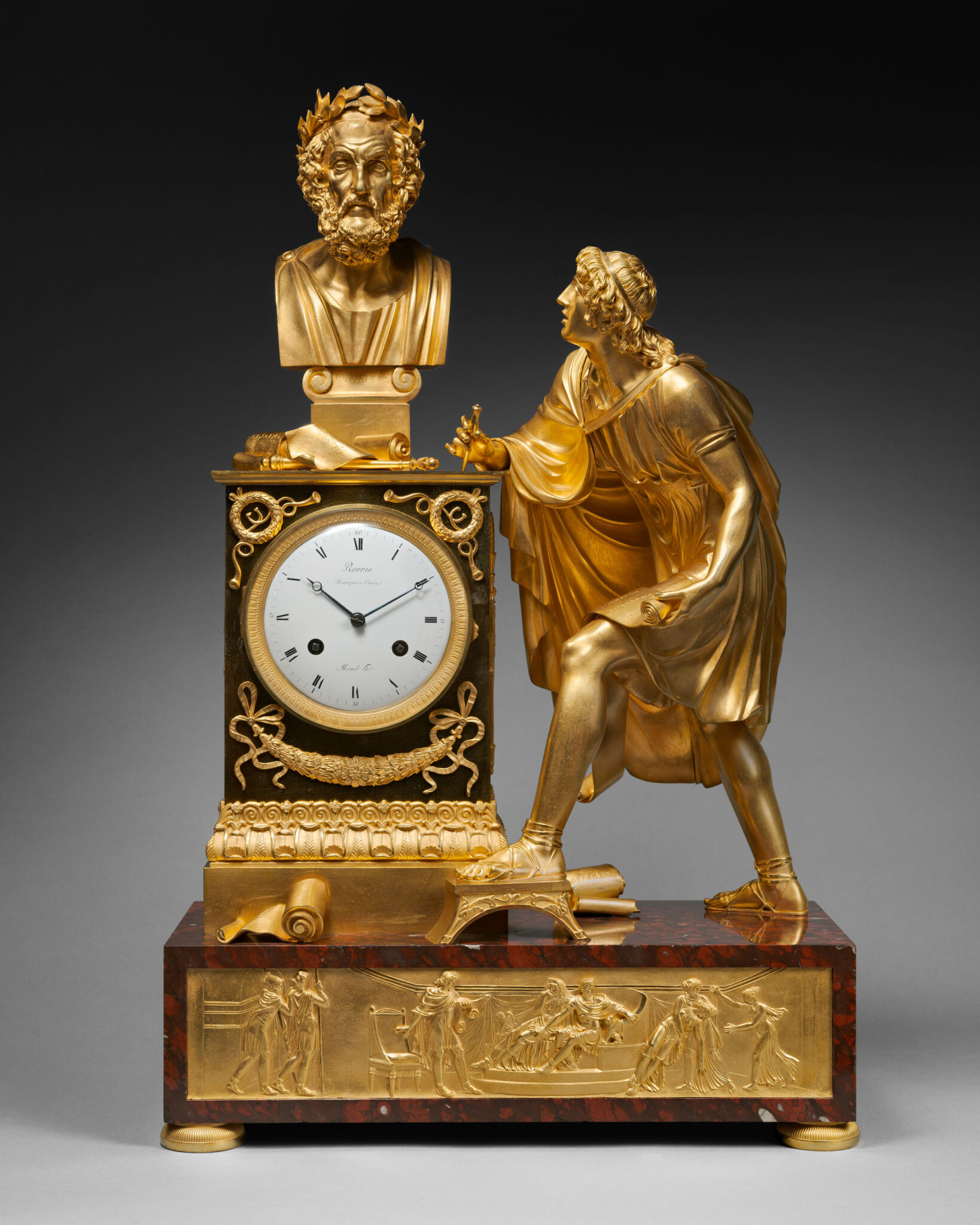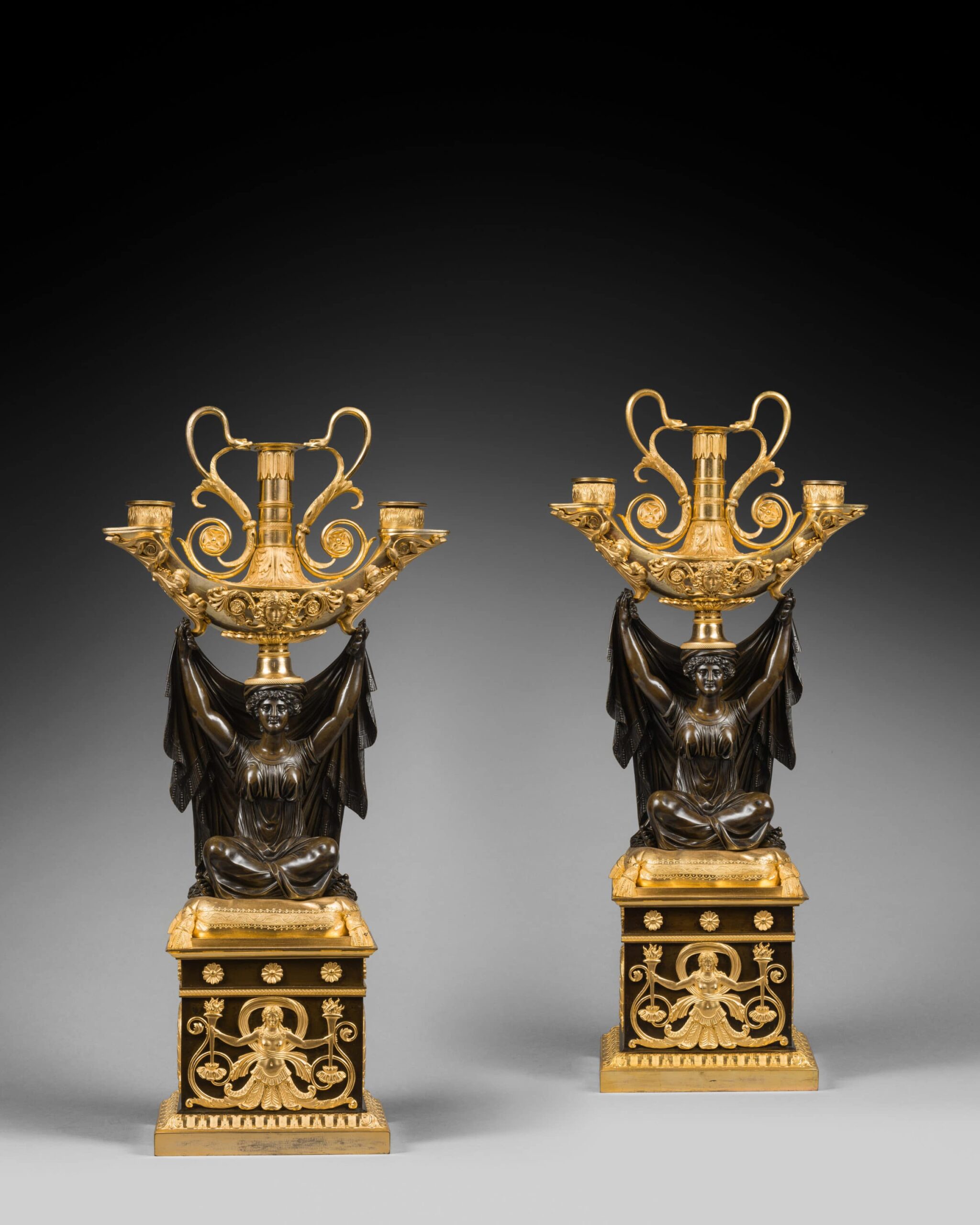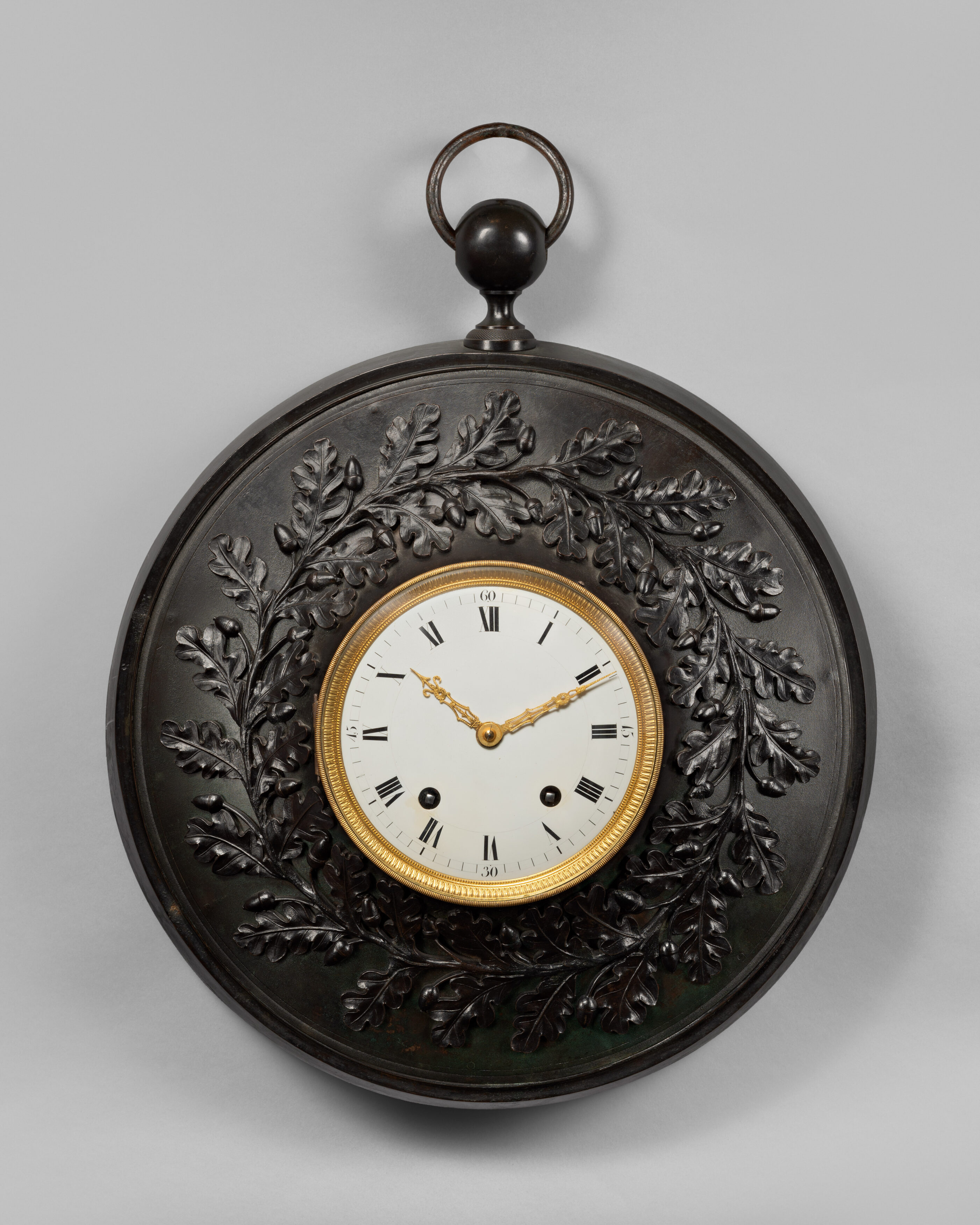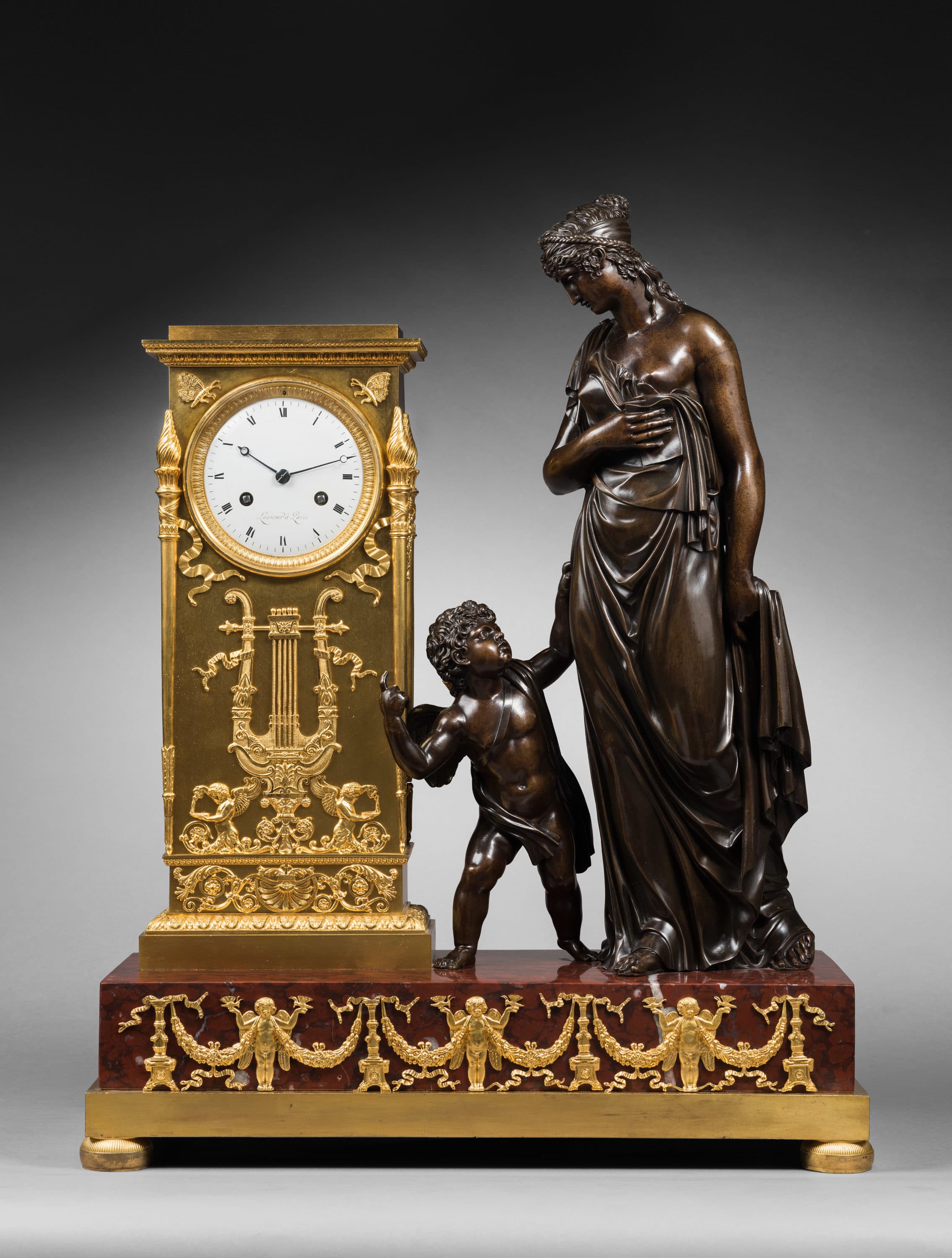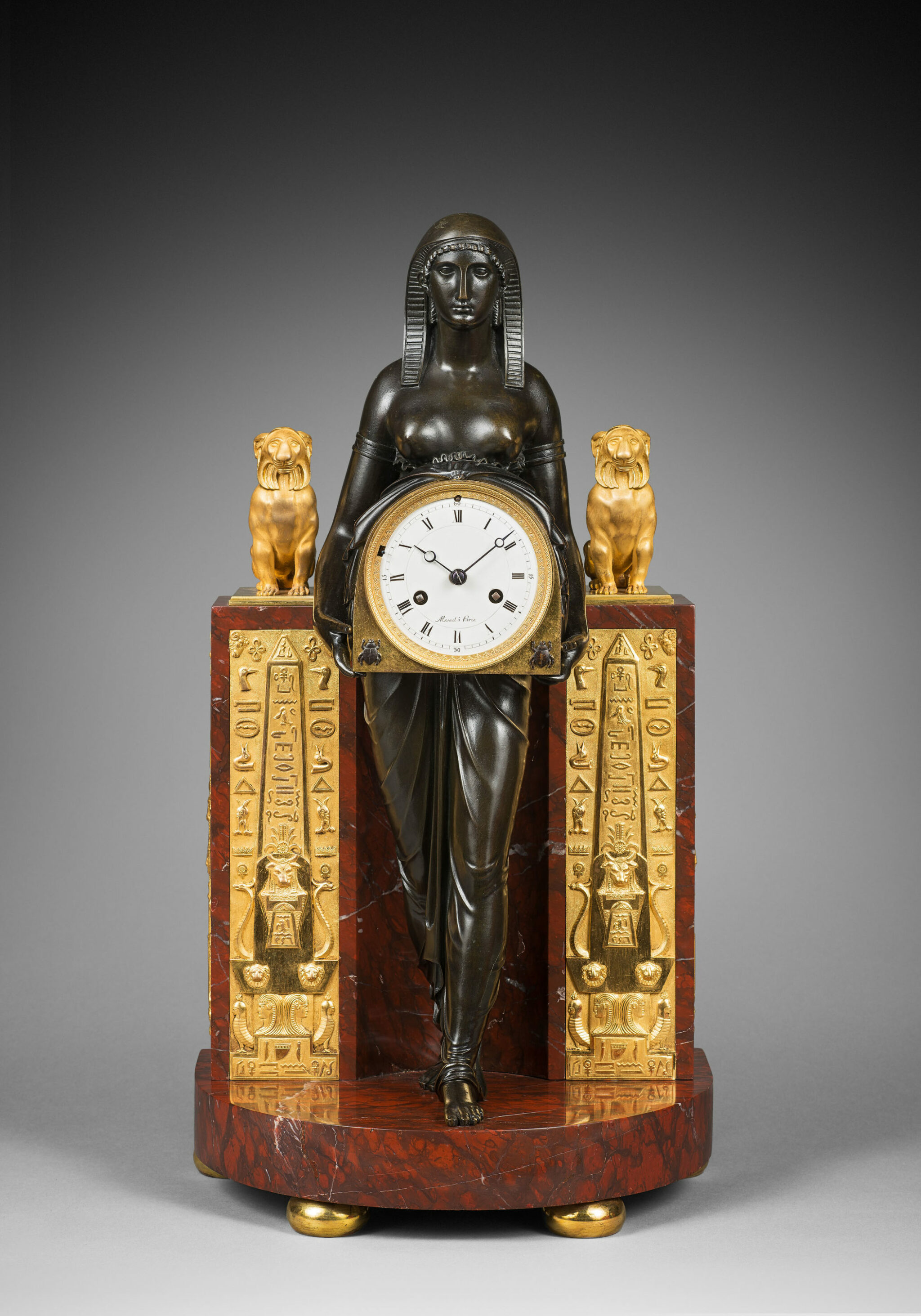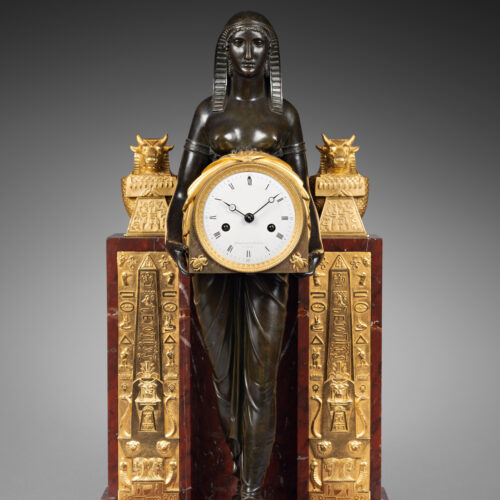A Rare Gilt and Patinated Bronze and Red Griotte Marble Mantel Clock with Matte and Burnished Finishing
The Egyptian, also known as the “Thomas Hope” model
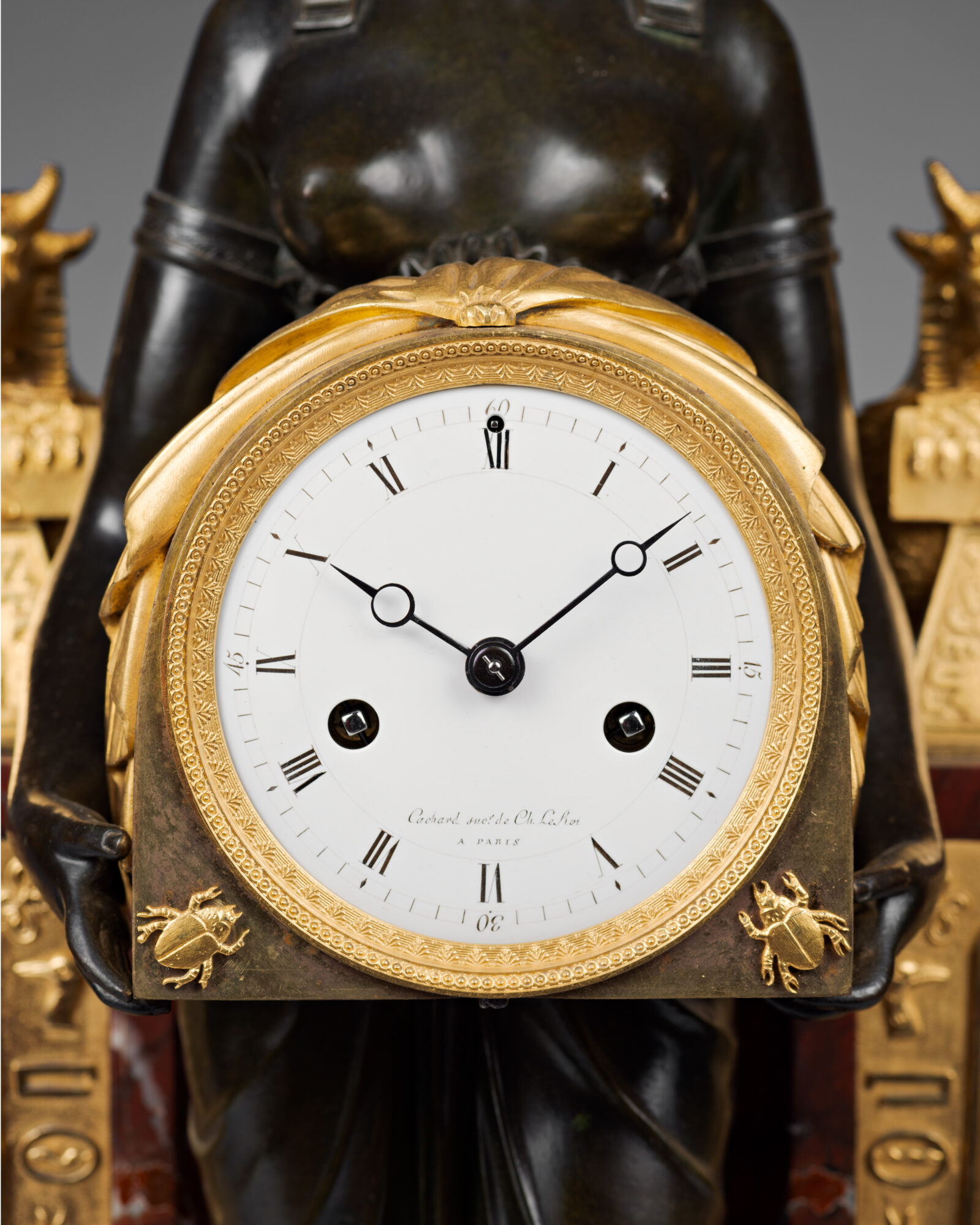
Cachard à Paris
Case attributed to André-Antoine Ravrio
Paris, Empire period, circa 1805
The round white enamel dial, signed “Cachard Suc(cesseu)r de Ch. Le Roi”, indicates the Roman numeral hours and the Arabic fifteen-minute intervals by means of two blued steel Breguet hands. The hour and half hour striking movement is housed in an architectural case with a mythological figure made of finely chased matte and burnished gilt bronze and red griotte marble. The bezel, which is adorned with knurled interlace friezes with cabochons and stylized flowers, is surrounded by a plate whose lower corners are decorated with two scarab spandrels. The case is held by a magnificent standing female figure depicting an Egyptian woman with nude torso, wearing long classical robes that are tied under the breasts; she wears a nemes headdress. Behind the figure there is a niche that is flanked by two rectangular pilasters that have elaborately decorated panels within reserves, which are adorned with low-relief hieroglyphics, including obelisks and the masks of Apis and Horus; each of them is surmounted by a gilt bronze bust representing Apis. The molded base, with rounded façade, is raised on four flattened ball feet.
Discover our entire collection of antique mantel clocks for sale online or at the gallery.
La Pendulerie is the specialist in fine and rare antique clocks, based in Paris.
In 1798 and 1801, France led expeditions into Egypt with the aim of frustrating Britain’s ambitions in the Orient, hoping to gain control of the country and dominate the region politically and economically. Led by then General Bonaparte, and afterward by his successors, this military operation, known as the French Campaign in Egypt, was also a research mission made up of eminent scientists and historians, and renowned artists. After the expedition’s return to France, there were extraordinary repercussions, particularly in the field of decorative arts. In 1802, Baron Vivant-Denon published his book Voyage dans la Basse et la Haute Egypte, which was met with great success. Afterward, architects, painters and artisans began to give their own interpretations of Egyptian models, which they then included in their own creations. In the field of the decorative arts, candelabra, consoles, flambeaux, clocks, furniture, seating, and mantelpieces were adorned with solemn female figures that were directly inspired by the monumental sculpture of Egypt during the pharaonic period.
The present unusual clock was created in that context. Its remarkable design, featuring the figure of the standing Isis who holds the dial, was created by Thomas Hope (1769-1831), an Anglo-Dutch collector, writer and decorator who had settled in London in the early 19th century and lived in a lavish home in Duchess Street. A highly talented decorator, Hope created decorative settings for his collections, among them a famous “Egyptian Room” in which he placed a clock he had designed and had executed in Paris by the bronzier Ravrio and the clockmaker Mesnil; this was the “Egyptian” clock, the same model as the present example. Today the “Hope” clock is in the Royal Pavilion Art Gallery and Museum in Brighton (see the exhibition catalogue Egyptomania, L’Egypte dans l’art occidental 1730-1930, Paris, Musée du Louvre, 1994, p. 192-193). The clock encountered immediate success among influential collectors. Several clocks, some featuring variations in their decoration, were made. Among them, one example, signed “Ravrio bronzier” and “Mesnil Horloger”, is illustrated in H. Ottomeyer and P. Pröschel, Vergoldete Bronzen, Die Bronzearbeiten des Spätbarock und Klassizismus, Band I, Munich, 1986, p. 336, fig. 5.3.2. A second example may be seen in an image of the famous Mancel collection, taken in the mid-20th century (see S. Chadenet, Les grands styles, Les styles Empire et Restauration, Editions Baschet et Cie, Paris, p. 25, fig. 2). A third, whose dial is signed “Ravrio bronzier” and “Raguet-Lépine”, was offered at auction in Paris in 1991 (see J-D. Augarde, Les ouvriers du Temps, La pendule à Paris de Louis XIV à Napoléon Ier, Genève, 1996, p. 358, fig. 265). One further comparable clock, which does not feature the hieroglyphic-adorned pilasters, is illustrated in P. Kjellberg, Encyclopédie de la pendule française du Moyen Age au XXe siècle, Les éditions de l’Amateur, Paris, 1997, p. 381, fig. B.
André-Antoine Ravrio (1759 - 1814)
Received master bronzier in 1777, Antoine-André Ravrio was one of the most important Parisian bronze-casters of the late 18th century and the First Empire. Main supplier to the Imperial Garde-meuble, Ravrio worked alongside Pierre-Philippe Thomire and Claude Galle on the refurbishment of the main residences of Emperor Napoleon and Empress Josephine, as well as supplying numerous bronze furnishings for the influential figures of the time, including a number of the Empire’s Marshals. Today, some of his work can be found in the collections of the Mobilier National in Paris, as well as in major international public and private collections.
